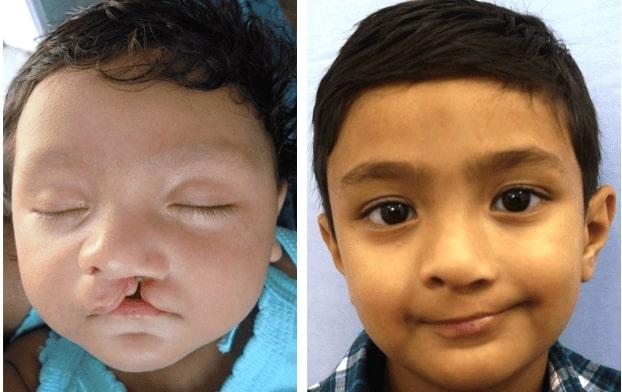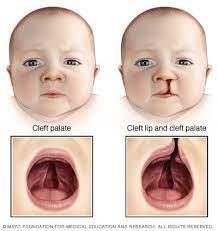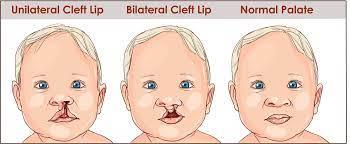Cleft lip surgery is a transformative procedure designed to correct the facial deformity caused by a congenital condition known as cleft lip. This condition occurs when the upper lip does not fully develop during early fetal development, resulting in a gap or split in the lip. Cleft lip surgery plays a crucial role in enhancing the quality of life for individuals affected by this condition, allowing them to achieve a more natural appearance and improved functionality.
The procedure for cleft lip surgery typically involves a comprehensive approach that addresses both the aesthetic and functional aspects of the condition. Surgeons specializing in cleft lip repair work closely with a multidisciplinary team, including plastic surgeons, oral and maxillofacial surgeons, speech therapists, and orthodontists, to ensure the best possible outcome for the patient.



During the surgery, the surgeon carefully brings together the separated tissues of the upper lip, meticulously closing the cleft. This may involve intricate techniques to realign the muscles, skin, and underlying structures, such as the nasal base. The goal is to create a more symmetrical, functional, and aesthetically pleasing upper lip contour. The procedure is typically performed under general anesthesia, ensuring the patient's comfort throughout the process.
The benefits of cleft lip surgery extend beyond the physical appearance. By correcting the facial deformity, individuals can experience improved self-esteem, enhanced communication skills, and better overall quality of life.
The procedure not only improves the appearance of the lip but also addresses potential functional issues, such as speech difficulties and feeding challenges that may arise due to the cleft.
Recovery from cleft lip surgery is a gradual process that requires careful post-operative care. Immediately following the procedure, the patient's lip may be covered with protective dressings to promote healing and minimize swelling. Pain medications and antibiotics are often prescribed to manage discomfort and prevent infection.
The medical team closely monitors the patient's progress during follow-up visits, providing guidance on wound care, dietary restrictions, and any necessary speech therapy.
It is important to note that cleft lip surgery may require multiple procedures over time, depending on the severity of the condition and individual needs. This approach allows the surgeon to gradually refine the results, optimize lip function, and address any residual aesthetic concerns.
In conclusion, cleft lip surgery is a transformative procedure that corrects the facial deformity caused by a congenital condition. Through the comprehensive explanation of the procedure, benefits, and recovery process, it becomes evident that cleft lip surgery plays a vital role in enhancing the quality of life for individuals affected by this condition. By addressing both the aesthetic and functional aspects, this surgical intervention offers a path to a more natural appearance, improved self-esteem, and better overall functionality, ultimately empowering individuals to lead fulfilling lives.
Cleft lip surgery repairs a birth defect where the upper lip doesn't form completely, creating a gap.
Yes, it's a highly safe and effective procedure with minimal risks.
Surgeons carefully reattach lip tissue, reconstruct muscles, and reshape the nose for balance.
Infection, bleeding, scarring, and temporary numbness are rare but possible.
Expect swelling, discomfort, and altered feeding for a few weeks. Gentle care and pain medication ease the process.
Cleft lip and palate associations and specialized hospitals offer resources and support.
We are associated with experienced and highly skilled medical professionals. We use the latest medical technology available in the world and we provide medical services in collaboration with JCI & NABH Certified hospitals only. Our services include various types of treatment and organ restructuring and transplant.
